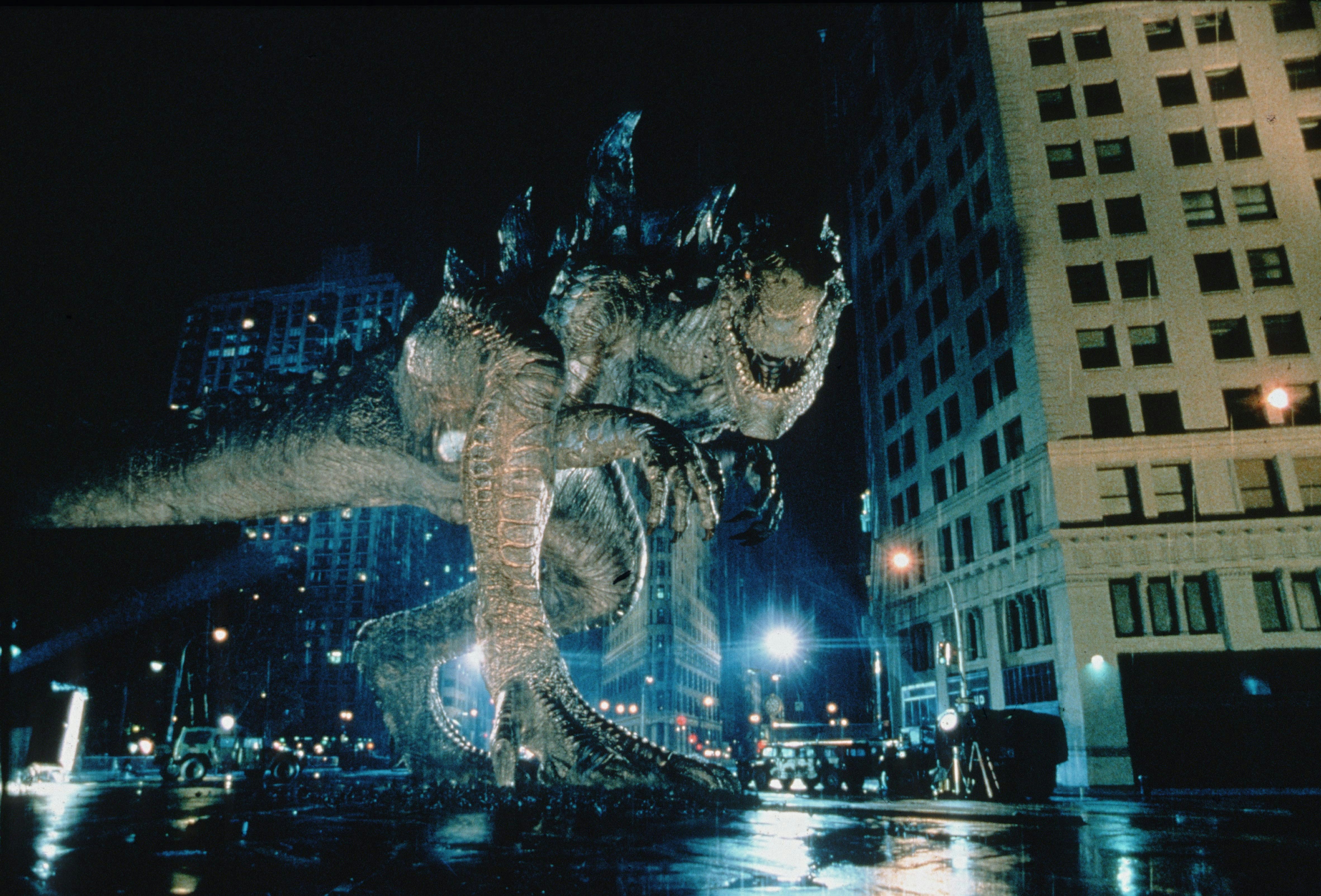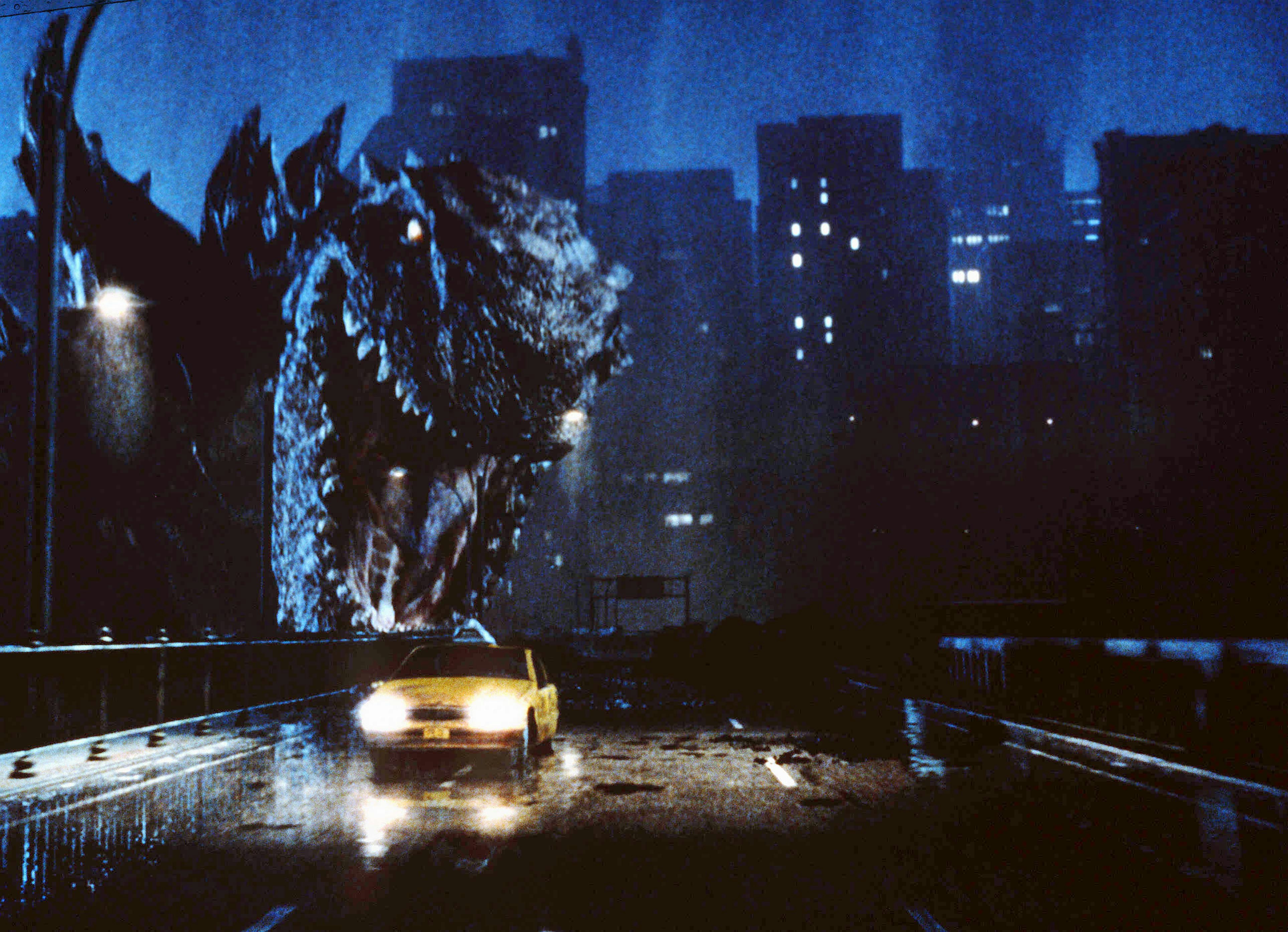
Dean Devlin still remembers the first time he saw 1998’s Godzilla in theaters. It was one day before the premiere, and Devlin, who co-wrote the script with director Roland Emmerich, was standing in the back of a room full of Los Angeles movie theater owners who’d been invited to the movie’s first and only test screening.
“I instantly knew what was wrong with the film,” Devlin tells Inverse. “I instantly knew how to fix it. And I knew we didn’t have time to do it.”
There have been 37 Godzilla films to date. It is, in fact, the longest-running film franchise in history, with the first Godzilla released 69 years ago on Oct. 27, 1954. November is also a Godzilla-heavy month: In Japan, the latest Godzilla film, Godzilla Minus One, just stomped into theaters, with a U.S. premiere set for Dec. 1. And on Nov. 17, the Apple TV+ show Monarch: Legacy of Monsters debuts, featuring a big lizard with whom we are all intimately familiar.
But getting a Godzilla film right is a tall order (pun completely intended), and 2021’s Godzilla vs. Kong proves it’s often safer to just let two massive CGI creatures punch each other for 113 minutes. The 1998 version had the king of monsters — suddenly more of a radioactive iguana — arrive in New York while the U.S. military tries its best to stop him. Meanwhile, nuclear scientist Niko Tatopoulos (Matthew Broderick) is led to a nest inside Madison Square Garden, which leads to a bunch of Godzilla babies attacking all the main characters. Ultimately, the Air Force manages to murder Mummy Godzilla in a final showdown on the Brooklyn Bridge. Having held off on revealing what Godzilla looked like during the marketing campaign, the film was an anti-climax and disappointment to most critics and plenty of fans, with various unsatisfying characters and a sense that the title character didn’t look quite right.
So where did the movie go so terribly wrong? In an interview with Inverse, Devlin reveals why his and Emmerich’s Godzilla went off the rails in the form of five pieces of advice filmmakers should follow when putting the huge lizard on screen.
5. Don’t wait to introduce your characters

Devlin thinks one of the fatal mistakes in his and Emmerich’s script (though he takes more of the blame “because Roland was trying to solve so many puzzles”) was that the characters the audience needed to really care about were introduced too late in the film, after a lot of business involving Godzilla.
“Movies normally start out with a lot of setup of who the characters are and what the motivations are, and then throw you into the story,” says Devlin. “We had this idea of, what if we just throw people into the story and really set up the characters in the second act? Which was a giant mistake.”
The ex-girlfriend of Matthew Broderick’s character, played by Maria Pitillo, takes so long to be introduced that she feels like she is going to be a minor character. Devlin realized all too late that the audience didn’t know how to feel about the film’s protagonists — also played by Hank Azaria and Jean Reno — because the timing was all wrong.
“Things that should have been funny or things that should have been emotional felt stupid because it didn’t make sense to you, watching it,” Devlin says. “So there was this frustration and anger.”
4. Don’t make Godzilla neutral

One of Godzilla’s biggest mistakes was not making it clear how the audience ought to feel about the big lizard.
“Roland had an idea that I think was very interesting on an intellectual level, which was that Godzilla should neither be a hero nor a villain; that he’s simply a really large lizard,” Devlin says. “I think on this type of movie, especially with the massive fan base of Godzilla, we really needed to decide if we were doing a movie where Godzilla was the villain or Godzilla was the hero.”
If the latest film and TV show are to succeed, goes the thinking, it should be obvious to the audience what role Godzilla is playing. In the very first Godzilla, way back in 1954, the huge creature is essentially a murderous villain. In recent years, Godzilla has become more of a hero (with some exceptions), helping humanity in its battles with other monsters.
“I think I should have realized that you can’t be ambivalent about the title character,” says Devlin. “Right now it seems so obvious but when we were doing it we thought, ‘Oh, this is so interesting. We’re doing something so cool.’”
3. Don’t skip those test screenings

TriStar was so keen to release Godzilla on Memorial Day weekend that the studio skipped the usual test screenings.
“Had we tested it, I would have done some reshoots,” Devlin says. “I would have juggled some scenes around. I would have established the characters and tried to set up who they are and what they want and what they care about first. And I absolutely would have made the decision that Godzilla is a hero and not a monster.”
2. Don’t be too restricted by Godzilla’s minders

Toho Studios, who own Godzilla, gave TriStar a huge dossier dictating what could and couldn’t be done with the monster.
“It was something like a 4,000-page document,” says Devlin. It was impossible to keep all of the stipulations in mind, though the team tried their best. (They included the request that Godzilla not be mocked.)
While Devlin blames himself for the movie’s failures, the restrictions didn’t make for a liberated creative environment.
“They thought by creating these rules they would be able to protect it,” he says. “But in an effort to protect it, you can really hinder its ability to evolve into something that’s good.”
1. Don’t make it rain the whole time

Finally, looking back, Devlin regrets the amount of rain the film decided to use.
“We were hoping that nighttime and rain would help hide any flaws in the CG,” he says. It’s raining in almost every scene of the film, a decision that involved a huge number of water towers and a huge amount of getting wet. “It was just miserable. It was a miserable decision.” Given his time again, Devlin would not re-think the rain.
While there is no reason to think that Monarch: Legacy of Monsters will make the same mistakes that the 1998 film did, Devlin is clear that Godzilla is always a tricky project.
“It’s tough when you play with something that was so meaningful to people,” he says. “When you take on somebody else’s brand you have to be very careful, and there’s no doubt you will piss people off.”
And what does he make of the Godzilla films released after his?
“I haven’t watched them. I have too much PTSD.”




!["[T]he First and Fifth Amendments Require ICE to Provide Information About the Whereabouts of a Detained Person"](https://images.inkl.com/s3/publisher/cover/212/reason-cover.png?w=600)


